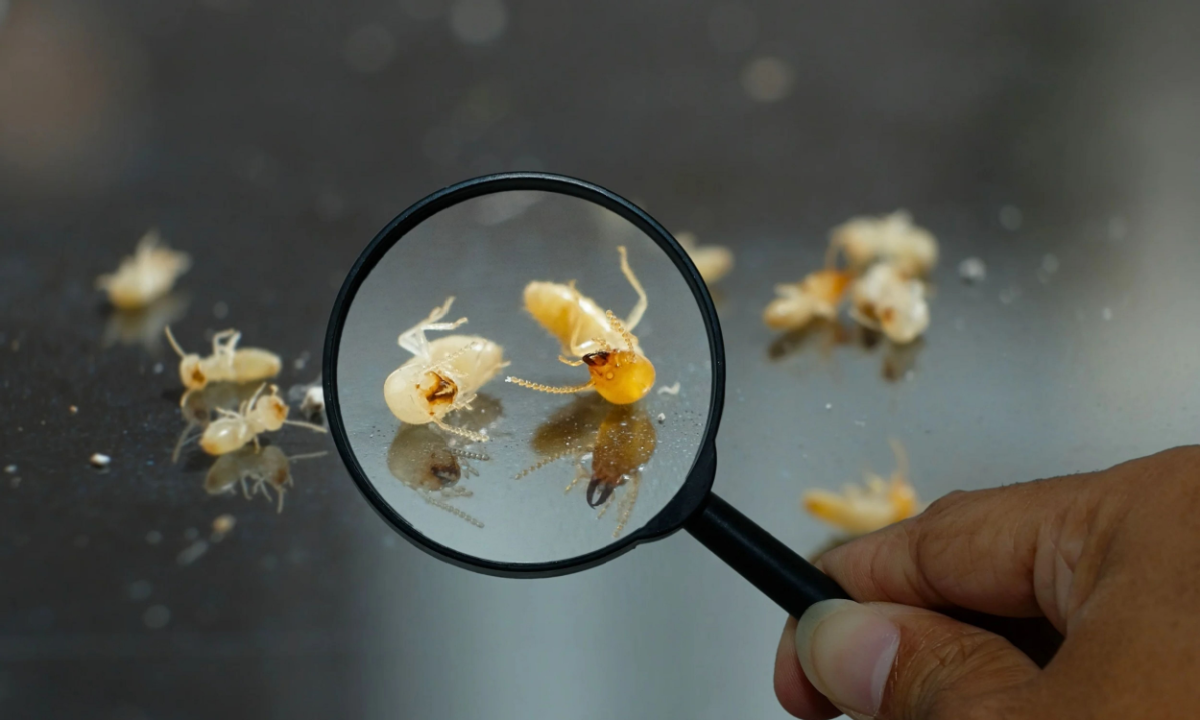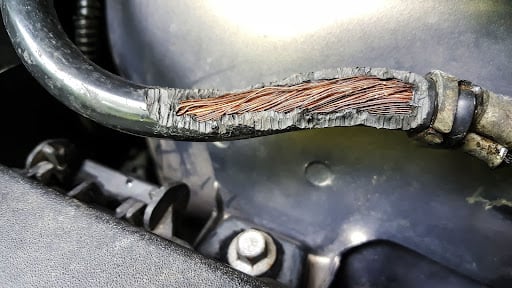The popular flea collar Seresto made headlines last summer when lawmakers urged the company to recall its collars after linking it to thousands of pet fatalities.
This prompted a nationwide discussion over the efficacy of flea collars and the pesticides used to manufacture them. While effective at preventing fleas and ticks, the dangerous side effects left many pet owners angry and confused.
Certainly, pesticides can be dangerous in instances of direct exposure, but their efficacy in treating home infestations, like bed bugs and preserving crop yields can’t be overstated.Request a Free, No-Obligation QuoteAs a result, the best way to protect oneself is by learning more about pesticides.
Request a Free, No-Obligation Quote
As professional exterminators who handle pesticides for a living, we can say that we wouldn’t be able to do our job without pesticides.
However, it’s important to discuss the proper handling of pesticides and outline the risks associated with their use so everyday homeowners can balance the risks of pest infestations with their chemical treatments.
Are Exterminator Pesticides Safe for Humans?
Unfortunately, there is no simple answer to whether pesticides are safe. In many cases, professional handling of pesticides guarantees their safety and allows humans to resume dwelling in their homes after brief use.
On the other hand, direct exposure to these chemicals can lead to several harmful side effects, such as headaches, fatigue, nausea, and much worse.
Ultimately, pesticide safety comes down to how they are handled and our levels of exposure.
For these reasons, we’d like to list why pesticides are beneficial and safe for humans.
- The EPA regulates pesticides. Unlike chemicals like diazinon, which have been banned in the past, most modern pesticides are tested and certified for safe levels of human exposure in very small amounts.
- They’re effective at emergency treatment. Chemicals like Fipronil offer the quickest results regarding full-on termite infestations. And since exposure is minimal and professionals handle these chemicals, these chemicals may actually protect your health by getting rid of dangerous pests.
- Professionals handle them. Exterminators are trained in proper pesticide handling and will ensure that homes are safe after treatment before people can resume living inside them. This ensures minimal exposure and that all people, pets, and plants are protected from potential toxicities.
Ultimately, pesticide safety must be balanced against the health risks of pests themselves and tempered by whether or not pesticides are applied professionally or DIY. In the former case, we can ensure the safety of these chemicals and that the use of these products harms no one.
What Are Some Harmful Effects of Pesticides?
The harmfulness of pesticide exposure depends on their exposure rate and toxicity level. As we’ll illustrate later, some chemicals may be more toxic than others.
Ultimately, symptoms arise based on how exposure is made and for how long.
Topical Exposure
- Dermatitis
- Rashes
- Blisters
- Allergic reaction
Inhalation
- Coughing
- Wheezing
- Watery eyes
- Sneezing
- Respiratory issues resembling asthma
Other Symptoms
- Headache
- Nausea
- Vomiting
- Trouble breathing
- Digestion issues
- Changes in heart rate
- Coma
- Death
Cases of severe toxicity are extremely rare and almost always a result of DIY handling.
In many cases, exposure produces no symptoms. In fact, most studies show that people encounter or use at least one pesticide yearly without any effects.
How to Prevent Pesticide Toxicity
The danger of pesticides comes down to handling. Here are a few tips to help you prevent potential toxicity from mishandling products.
- Read labels carefully
- Only apply as much product as required.
- Keep areas well-ventilated if applying aerosol products
- Remove all clutter, including chew toys and kid’s toys, from exposure
- Keep pets and children out of the house while applying pesticides
- Keep pets off the lawn if applying lawn products for the manufacturer’s recommended amount of time
- Use non-toxic alternatives for DIY use
- Call a professional for larger infestations
- Store products out of the reach of pets or children
How to Prepare for Pest Treatment
With all of this information in mind, this leaves many people worrying about whether or not professional pest treatment or fumigation is safe. We can tell you it is, but if you’re still worried, there are several ways to prepare for treatment to limit potential exposure or risk.
- Place all food and perishables in cupboards
- Vacuum floors and wash countertops
- Move furniture away from walls
- Keep the home well-ventilated
- Stow away any clothes or belongings
- Take your kids and pets away from home during treatment
Request a Free, No-Obligation Quote
Common Pesticides Used By Exterminators and Their Risk
Again, the level of toxicity will be different for every chemical pesticide and how much is applied. For example, the most common pesticides exterminators use include:
- Fipronil: A mildly toxic pesticide used primarily for termites, cockroaches, and fleas. This pesticide comes in liquid or spray form and does require evacuation during treatments.
- Boric acid: Boric acid is one of the most widely used chemical pesticides and also one of the most dangerous. It’s typically applied as a spray but has a sweet aroma that may attract kids and pets, making it dangerous without proper precautions.
- Piperonyl butoxide: This is a carcinogenic pesticide used for severe pest infestations and alongside other chemicals. Proper fumigation and time to allow the chemical to dissipate are necessary for safe usage.
- Pyrethrins and pyrethroid: These are a class of effective insecticides which are generally safe for human exposure but can be deadly for aquamarine life. Proper handling and disposal are crucial.
- Indoxacarb: This is a relatively new chemical effective at combating cockroaches and preventing them from producing new generations of roaches. This chemical is relatively safe, though it does present some neurotoxic properties at high doses, meaning limited exposure is key.
- Hydramethylnon: This is a slow-acting compound that can cause lethargy and death in insects. Due to the time, it takes to work, homeowners often must evacuate the property for several days to allow the chemical to dissipate.
However, these pesticides should only be used by a professional.
For DIYers, the following are safer alternatives and ideas to rid your home of pests.
Safe Pesticide Alternatives for Pest Control
- Insecticidal Soaps
- Horticultural Oils
- Neem Oil
- Azadirachtin
- Horticultural Oils
- Bait Stations
You can find a wide list of all-natural products for any category of insecticide or pesticide treatment with a little research.
Often, the most effective and safest method of pest reduction comes from prevention.
Ways to Prevent Pests Naturally
- Door sweeps: Door sweeps seal off openings under doors to prevent mice and various insects from entering your home.
- Sealing cracks: Similarly, applying spray foam insulation or caulk to openings in your home may seal away any insects that try to take refuge in your home during the winter.
- Remove all garbage: Garbage is a magnet for cockroaches and insects. Keep your home clean, especially during the sweltering months of summer and extremely cold winter months.
- Washing dishes immediately: Remove all food from dishes and wash them as soon as possible to keep bugs away.
- Plant herbs: Certain plants and herbs like lemon balm, sage, thyme, and peppermint keep bugs away naturally from your garden and your home.
- Dichotomous earth: Applying diatomaceous earth around your home and garden can protect against beetles, spiders, fleas, worms, and so much more.
- Essential oils: Certain bugs, like cockroaches, can’t stand the smell of eucalyptus and tea tree oil.
- Pest control maintenance plans: Exterminators like my company, Anchor Pest Control, offer 365-year-round protection against pests using safe and effective prevention and control mechanisms.
What Is Integrated Pest Management?
A special program known as Integrated Pest Management (IPM) has been developed for people weary of the environmental impact of pesticides. While IPM is mostly reserved for farmers, the same principles of IPM can be applied to gardens and homes.
Some of the principles of IPM include:
- Identifying pests and determining if controls are required
- Using natural preventative measures (listed above) to prevent infestations
- Implementing control measures when prevention has failed
- Using natural alternatives to pesticides when allowed
- Choosing the least toxic form of pesticides when extensive treatment is required
We highly recommend anyone who is dealing with pests in their home or garden to adopt these principles for safe management. However, in cases where professional assistance is required, the sooner a professional can get involved, the safer.
Cases When You Should Call a Professional Exterminator
While DIY methods may save money, they are not as effective or safe. In many instances, calling a professional exterminator is the best option to control and eliminate potential infestations before they threaten your health.
We recommend contacting your local exterminator immediately if you spot the following bugs:
- Bed bugs
- Cockroaches
- Termites
- Large populations of ants
- Large populations of rodents
- Large populations of spiders
- Large populations of wasps
- Large populations of snakes
Often, pesticides are the only safe and effective option to prevent these insects from spreading or causing further damage to your home.
In many cases, even professionally, the use of pesticides is seen as a last resort option. In such cases, a full-on pest infestation’s health risks often outweigh the health risks of pesticide usage.
However, by seeking professional help for pest treatment or pesticide use, you can greatly limit your risk of exposure to toxic chemicals and rest assured that these chemicals will be handled safely.
While pesticides are undoubtedly harmful, seeking professional help will ensure that they are of no risk to you or your family.
Pesticide FAQS
1. What are the most harmful pesticides for humans?
While not widely used by many in the industry, organophosphates, including chlorpyrifos and diazinon, banned since 2001, are considered the most toxic because they attack the nervous system. Other chemicals like boric acid and fipronil are considered moderately toxic but safe under proper handling.
2. What happens if a pesticide touches your skin?
Wash the affected area with water and soap. Discard any contaminated clothing. Seek medical attention if you develop severe symptoms like a rash or contact dermatitis.
3. How long do pesticides stay in the body?
Most pesticides have a low half-life of around 16 days, while some may go as high as 60 days or older. For example, some pesticides, such as DDT, may last several years, though this is rare.Request a Free, No-Obligation Quote



